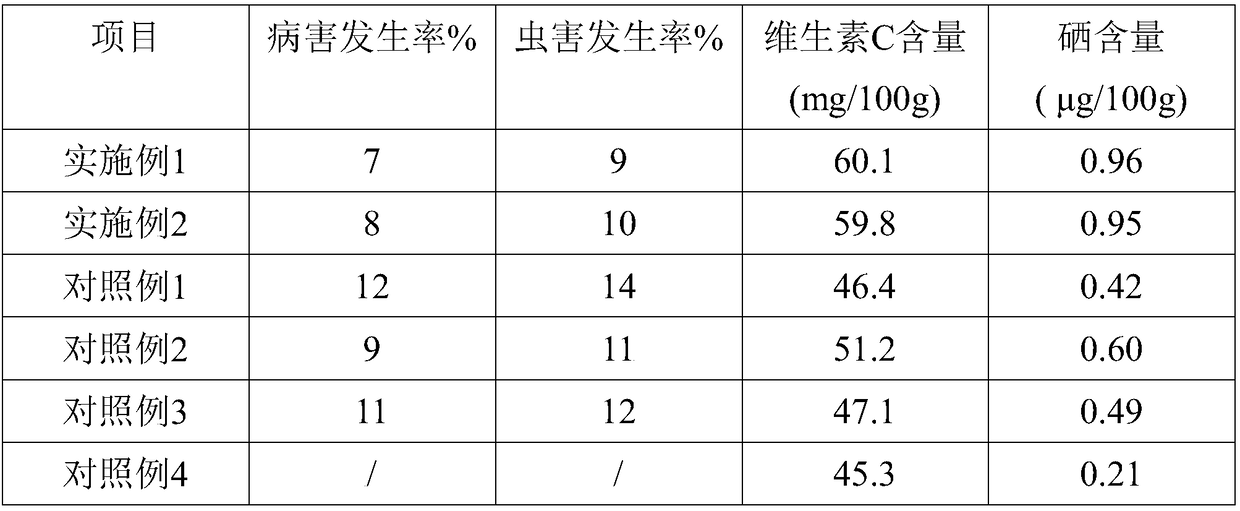Pest-prevention and disease-resistant planting method for asparagus
A technology for planting asparagus and preventing insects, applied in the field of agriculture, can solve problems such as easy occurrence of diseases and insect pests, impact on human health, and difficult washing of pesticides, etc., and achieve the effects of avoiding fertilizer loss and waste, low cost, and maintaining stability
- Summary
- Abstract
- Description
- Claims
- Application Information
AI Technical Summary
Problems solved by technology
Method used
Image
Examples
Embodiment 1
[0027] (1) Pretreatment: Soak the seeds at 22°C for 2 days before sowing, and change the water every morning and evening; place the soaked seeds at a low temperature of 2°C for 60 days to facilitate the completion of the dormancy period;
[0028] (2) Soil preparation: Evenly bury 1600kg of organic fertilizer and 16kg of nitrogen, phosphorus and potassium compound fertilizer per mu of land, and plow 30-40cm deep in the whole field to mix the soil and fertilizer evenly;
[0029] (3) Dense planting cultivation: Ditching and planting with a row spacing of 0.8-1.0m, a plant spacing of 20-25cm, and 2800-3000 plants per mu;
[0030] (4) Fertilizer and water management: In the first month after planting, topdress 17kg of urea per mu, and then topdress 14kg of nitrogen, phosphorus and potassium compound fertilizer per mu per month; Fertilizer 1600kg, nitrogen, phosphorus and potassium compound fertilizer 15kg, topdressing nitrogen, phosphorus and potassium compound fertilizer 10kg per ...
Embodiment 2
[0036] (1) Pretreatment: Soak the seeds at 24°C for 2 days before sowing, and change the water every morning and evening; place the soaked seeds at a low temperature of 4°C for 60 days to facilitate the completion of the dormancy period;
[0037] (2) Soil preparation: Evenly bury 1600kg of organic fertilizer and 16kg of nitrogen, phosphorus and potassium compound fertilizer per mu of land, and plow 30-40cm deep in the whole field to mix the soil and fertilizer evenly;
[0038] (3) Dense planting cultivation: Ditching and planting with a row spacing of 0.8-1.0m, a plant spacing of 20-25cm, and 2800-3000 plants per mu;
[0039] (4) Fertilizer and water management: In the first month after planting, topdress 17kg of urea per mu, and then topdress 14kg of nitrogen, phosphorus and potassium compound fertilizer per mu per month; Fertilizer 1600kg, nitrogen, phosphorus and potassium compound fertilizer 15kg, topdressing nitrogen, phosphorus and potassium compound fertilizer 10kg per ...
Embodiment 3
[0071] Based on Example 1, set the comparative example 1 that does not modify the chaff charcoal, the comparative example 2 that uses polyethylene glycol 400 as a dispersing aid, the comparative example 3 that does not add a dispersing aid, commercially available common asparagus Comparative example 4.
PUM
 Login to View More
Login to View More Abstract
Description
Claims
Application Information
 Login to View More
Login to View More - Generate Ideas
- Intellectual Property
- Life Sciences
- Materials
- Tech Scout
- Unparalleled Data Quality
- Higher Quality Content
- 60% Fewer Hallucinations
Browse by: Latest US Patents, China's latest patents, Technical Efficacy Thesaurus, Application Domain, Technology Topic, Popular Technical Reports.
© 2025 PatSnap. All rights reserved.Legal|Privacy policy|Modern Slavery Act Transparency Statement|Sitemap|About US| Contact US: help@patsnap.com

